Dynasty Fantasy Football Battle: Mike Williams vs Keenan Allen
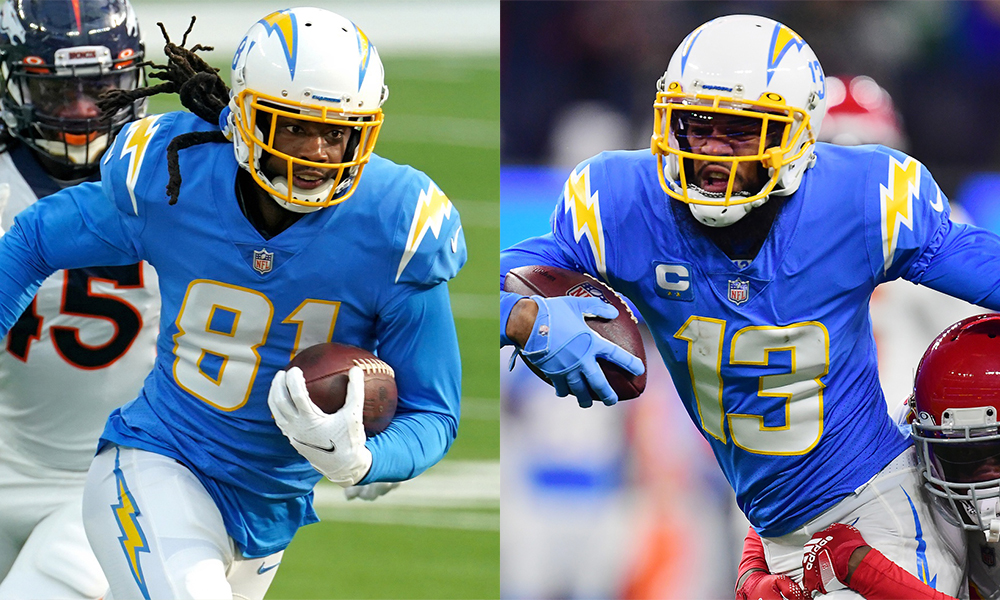
One of my favorite situations in dynasty fantasy football is when there are two similarly valued players on the same team at the same position. So often, each player has his supporters in the dynasty community, and there’s a debate about which player should carry more value. I want to examine a few of these situations, breaking them down from statistical, ADP/trade value, and future situation angles. I did this series last year, so if you want to get an idea of what these articles are like, I provided the links at the bottom of this page.
This time, I want to look at a pair of older wide receivers in a high-powered offense, Keenan Allen and Mike Williams. In my last article, I discussed Amon-Ra St. Brown and Jameson Williams, two players I loved at their prices. I typically lean toward younger players, but I always like going outside my comfort zone as a writer. So let’s jump into it!
Statistical Duel
In this case, both players have played on the Chargers for their entire careers. But to make a good comparison, let’s start with Allen’s career before Williams arrived, then look at the two players in tandem from that point. The Chargers drafted Allen in the third round of the 2013 NFL Draft, where he joined a weak wide receiver depth chart. Therefore, he quickly rose to a solid role in the offense.
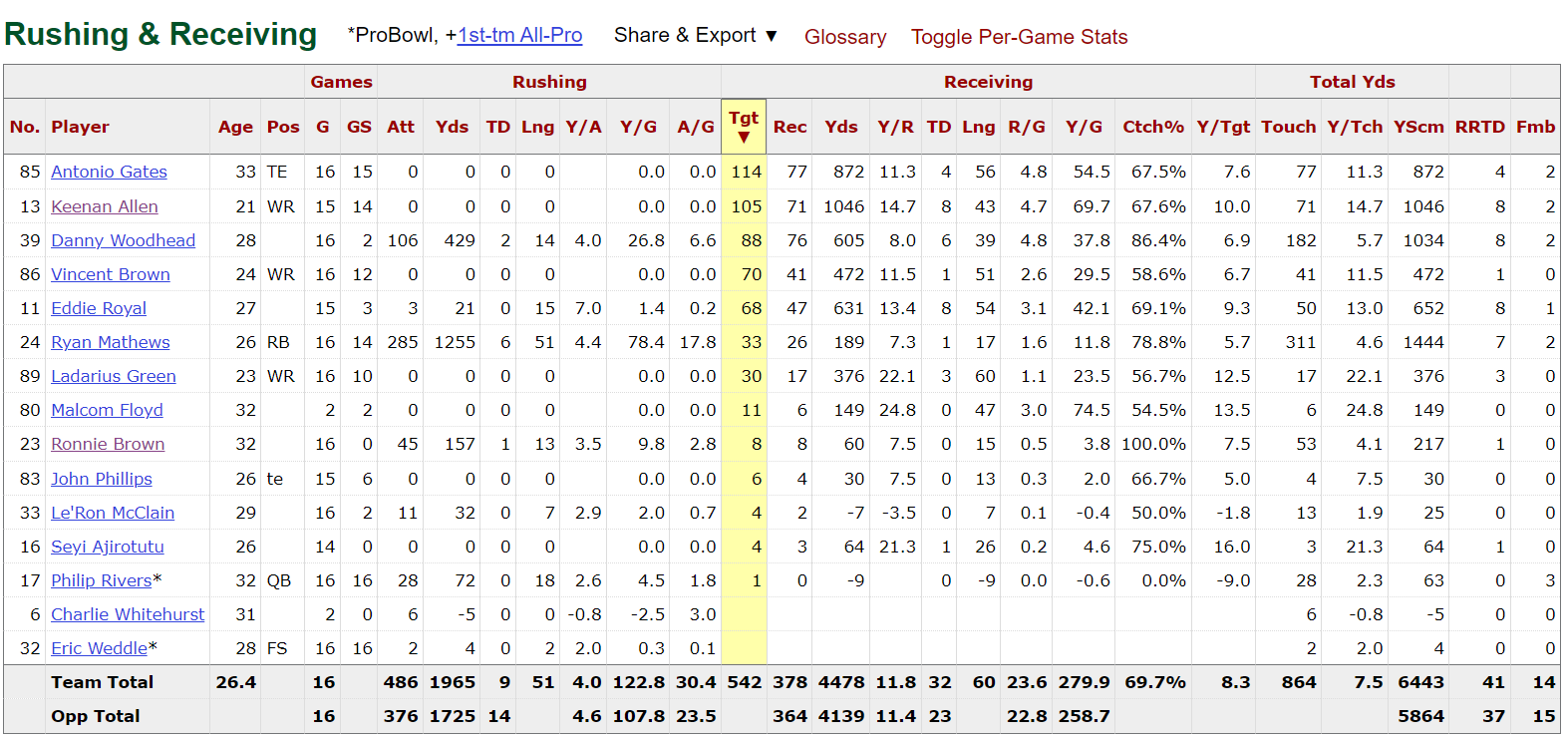
Chart courtesy of Pro Football Reference.
He immediately had a 1,000-yard season as a rookie, leading the team in yards and touchdowns and finishing second in receptions and targets behind Antonio Gates. Unfortunately, his career took a downturn after 2013.

Chart courtesy of DLF Player Scoring History App.
Allen played 14 games in 2014 but suddenly became an inefficient player, falling to an abysmal 6.5 yards/target. Because of that new inefficiency, he fell from WR18 to WR35 and from 14.91 to 12.81 fantasy PPG.
After 2014, he then began to struggle with injuries. In 2015, he almost duplicated his 2014 output in only eight games, averaging an impressive 20.44 fantasy PPG. But he missed the rest of the season with a kidney injury, cutting his breakout year short. He then tore his ACL in the 2016 season opener, preventing him from building on that 2015 success. Luckily, he had signed a contract extension before the 2016 season, but he certainly had an uncertain future after a rocky first four years.
The Chargers struggled to develop complementary weapons throughout Allen’s first four years. Gates continued to be one of their best receiving options, but nobody else stepped into a primary role. However, in 2016, Tyrell Williams filled in after Allen went down in week one, breaking out for 69 receptions, 1,059 yards, and seven touchdowns. Then, the Chargers drafted Mike Williams with the ninth overall pick in the 2017 NFL Draft, giving them yet another receiver. Considering that they also had Gates, Hunter Henry, and Travis Benjamin, the Chargers had one of the most loaded receiver groups in the league.
Unfortunately for Mike Williams, he struggled throughout his early career. Tyrell Williams remained ahead of him for the entire 2017 season, while Allen played 62 of 64 games from 2017 to 2020. Allen remained the clear top receiving weapon on the Chargers, relegating Williams to a secondary role.
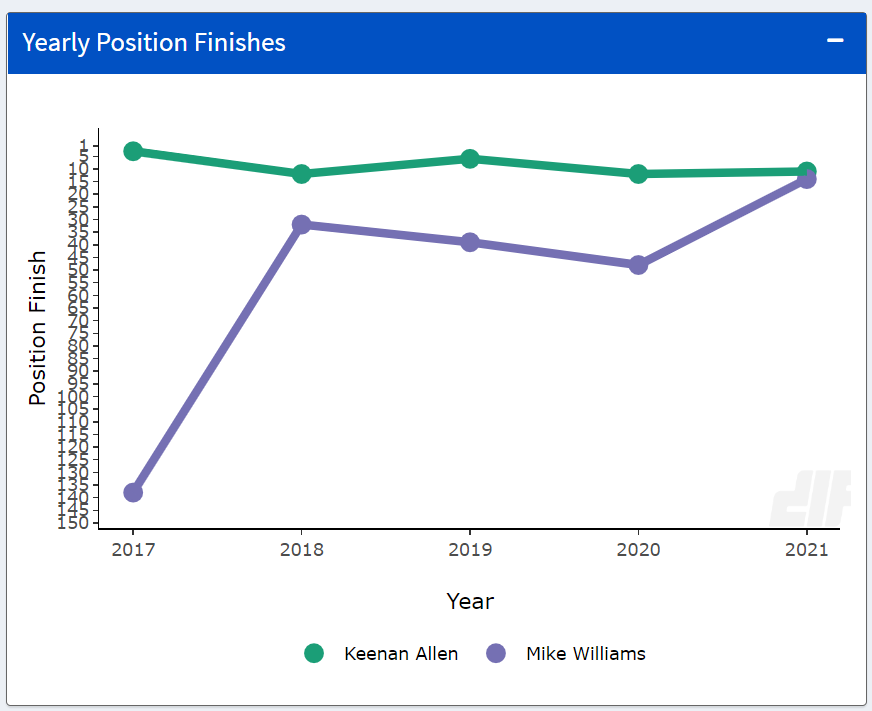
Chart courtesy of DLF Player Scoring History App.
Allen finished as a top 12 fantasy wide receiver every year from 2017 to 2020, while Williams failed to break the top 30 in any of those years.
However, Williams managed some success over his first four years.

Chart courtesy of Pro Football Reference.
As you can see, he had a double-digit touchdown season in 2018 and a 1,000-yard campaign in 2019, but he failed to put it all together in either year. Then, in 2020, he had neither the touchdown rate of 2018 nor the yardage of 2019. Therefore, after 2020, most dynasty managers dismissed Williams, as he hadn’t broken out over four years, and it seemed like the Chargers would move on after his 2021 fifth-year option year.
However, everything changed in 2021. Williams suddenly broke out, leading the Chargers in yards and touchdowns, although Allen still had more receptions and targets. Both players participated in 16 games, with Allen finishing at WR11 and Williams at WR14. But those totals don’t tell the whole story.
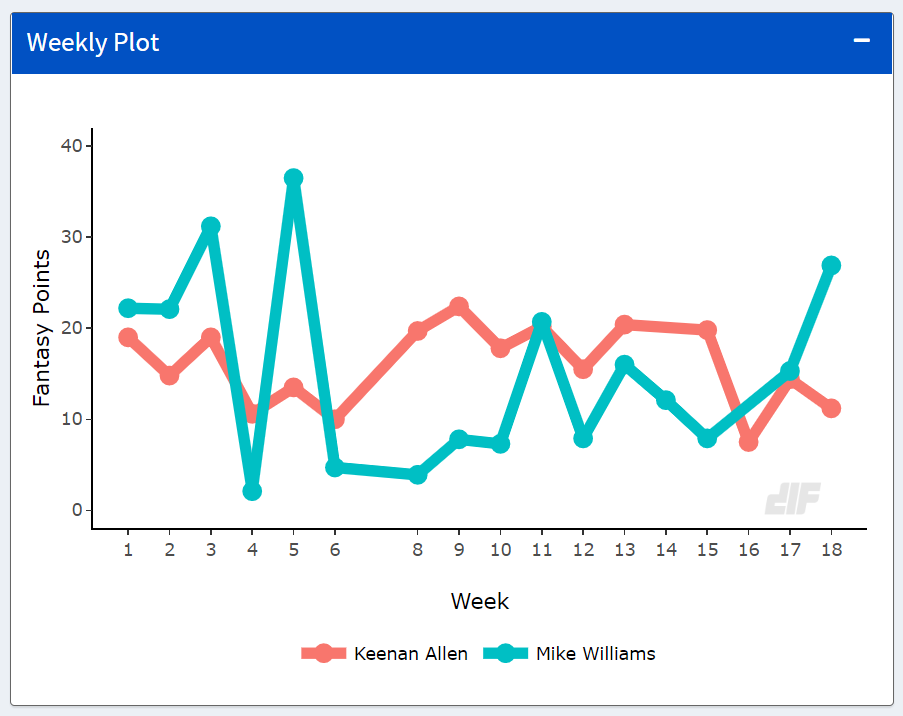
Chart courtesy of DLF Player Scoring History App.
Over the first five weeks, Williams outscored Allen in four of those contests, recording over 20 fantasy points in each game. But he dramatically fell off after that stretch, rarely outpacing him again. Williams only had two games greater than 20 points after week five, as Allen re-emerged as the top target.
Williams had a knee injury in the middle of the season that may have affected his output, but it’s also possible he couldn’t handle the heavy target workload. Either way, it’s tough to weigh his one strong stretch versus the rest of his inconsistent career. In contrast, Allen has produced every time he’s been on the field, even if he was fighting through injuries, at least since the 2014 season.
ADP Comparison
Interestingly, Williams actually comes in ahead of Allen in DLF’s current ADP data. Williams is the WR24 and 53.33 overall, while Allen is the WR25 and 56th. But it’s the first time Williams has had a higher ADP than Allen since October 2021.
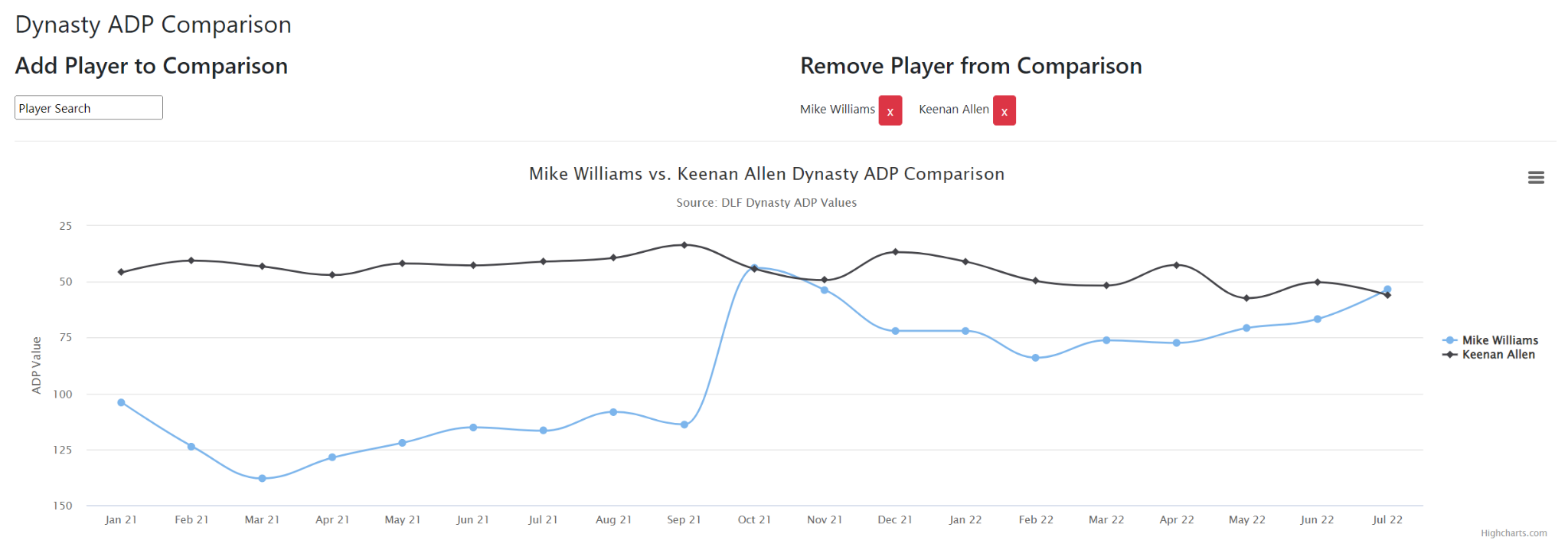
Chart courtesy of DLF ADP Comparison App.
It’s bizarre that Williams passed Allen this month, as Allen has had a consistent and significant lead throughout the off-season. Nothing changed for the two players from June to July, so this new data may simply be an aberration.
The Future
Both wide receivers have a bright short-term future in Justin Herbert’s high-powered offense. The Chargers recently signed Williams to a three-year, $60 million contract with $40 million guaranteed this off-season, locking him down through 2023 at a minimum. Allen remains under his previous contract extension, which also runs through 2024. However, unlike Williams’s deal, the Chargers can escape Allen’s contract after 2022.
Of course, Allen is slightly older than Williams, as he’s already 30 years old. On the other hand, Williams turns 28 in October, so he’s not super young. But if Williams has a solid year, he has at least the potential to gain some dynasty value, whereas Allen will likely permanently continue to lose value over time.
Conclusion
I understand why the dynasty market currently prefers Williams over Allen. He’s the younger player and has more guaranteed money remaining on his current contract. However, I simply can’t ignore Allen’s far more consistent and superior track record over Williams’s inconsistency. I don’t think either player will gain future value at their current cost, so if I had to choose, I’ll take Allen and his more secure production.
2022 Entries: Jaylen Waddle vs. Tyreek Hill, Kadarius Toney vs. Wan’Dale Robinson, JuJu Smith-Schuster vs. Skyy Moore, Chase Claypool vs. George Pickens, Damien Harris vs. Rhamondre Stevenson, Amon-Ra. St. Brown vs. Jameson Williams
2021 Entries: Courtland Sutton vs. Jerry Jeudy, Ronald Jones vs. Leonard Fournette, Corey Davis vs. Denzel Mims, Hunter Henry vs. Jonnu Smith, Cooper Kupp vs. Robert Woods
- Forgotten Dynasty Youth: Top Tier - March 27, 2024
- NFL Expiring Contracts In 2025: Tight End - February 25, 2024
- NFL Expiring Contracts In 2025: Wide Receiver - February 18, 2024


































































